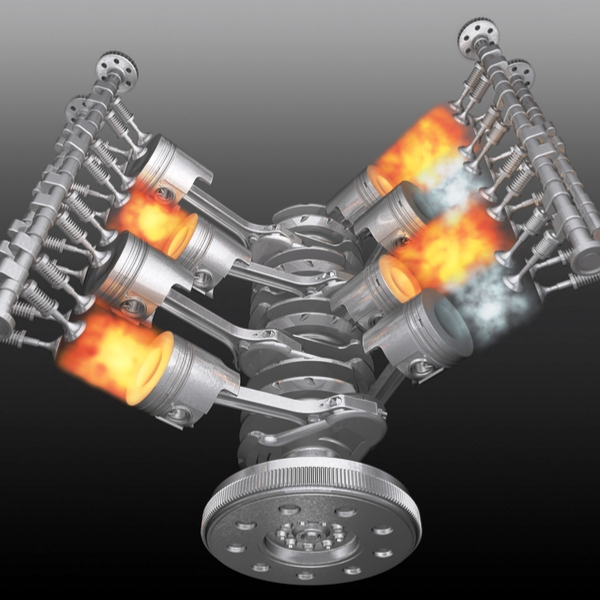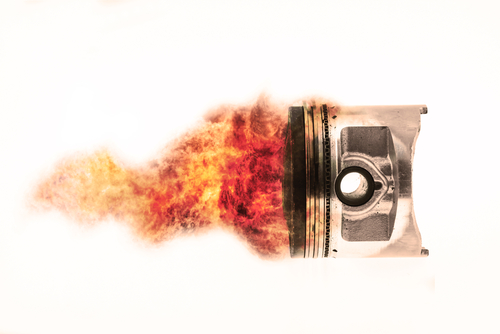
Despite vociferous claims by proponents of electric vehicles that the internal combustion engine is dead, the fact is that electricity as a propulsion method for mass transport is still several decades away from the point where it can be considered as a mature technology. As matters stand now, the internal combustion engine will be with us for a long time, and while many recent mechanical innovations have greatly improved the efficiency of internal combustion engine, the next round of innovations will involve combustion processes. This article will explore current research into some of the advanced fuel combustion process that are now under development, and which we are likely to see in production vehicles in the near future, starting with this question-
Innovations in internal combustion engine design is not so much driven by fuel manufacturers’ desire to save the planet, as it is driven by emissions regulations that are getting more stringent with each new iteration. However, even though measures such as lead-free fuel, EGR, multi-point direct fuel injection, diesel particulate filters, catalytic converters and many others have brought about a significant overall reduction in harmful exhaust emissions, the basic issue of relatively poor combustion of all types of fuel remains.
As a practical matter, solving the problem of poor fuel combustion was until recently hampered by a lack of sufficient computing power with which to model theoretical combustion processes. Since some of the processes under investigation operate (or occur) at the very edge of stability, advanced testing and control methods are required if these processes are to be brought to market.
Thus, armed with supercomputers that are capable of performing on petascales*, the automotive industry is now able to pursue the ultimate Holy Grail, i.e., low temperature combustion processes that produce no particulate matter, or measurable amounts of unburned hydrocarbons in exhaust emissions.
* The Titan supercomputer now operating at the Oak Ridge National Laboratory in the USA has a theoretical capacity of 28 “petaflops”, which is roughly equivalent to every living person on the planet performing 4 million calculations per second. This computer is now being actively used in the development of groundbreaking low temperature combustion processes- one of which has produced efficiencies of 59% in a diesel engine using two fuels at the same time, which brings us to this question-

At first glance, it might seem counterintuitive to pursue low combustion temperatures, since it makes sense that the higher the combustion temperature is, the more completely any given fuel will combust. While this is true, it is so only up to a point, as the example of NOx formation in internal combustion engines will show.
NOx is a generic term for nitrogen dioxide and nitric oxide; the two chief ingredients in particularly diesel exhaust that directly cause acid rain and smog. Typically, NOx forms at combustion temperatures of around 13000C in diesel engines, and while the formation of NOx can be mitigated by EGR and variable valve timing mechanisms (among others), these measures cannot eliminate the formation of NOx altogether.
Moreover, by diluting the air/fuel mixture with exhaust gas the calorific value (energy content) of the air/fuel charge is reduced as well, which has negative implications for fuel economy. In addition, engine designers largely agree that NOx- limiting measures have now reached a plateau in terms of the technology used, and no new developments in this area are envisaged beyond devising radically new combustion processes.
Clearly then, the solution lays in reducing combustion temperatures to below the point where NOx can form, while at the same time developing a combustion process that combusts all of the fuel using all of the available air in the air/fuel mixture. In addition, a low temperature combustion process must also extract more energy from any given volume of fuel than is possible to do with current processes, which taken together with the zero particulate matter requirement, is a very tall order indeed- which begs this question-
Mazda has produced a production engine that uses its proprietary Skyactiv technology to reduce the formation of NOx and UHC (unburned hydrocarbons) significantly with extremely high compression ratios. In Mazda-speak, this process is known as HCCI (Homogenous Charge Compression Ignition), and under some operating conditions, the process can combust a petrol-based air/fuel mixture by compression alone.
While HCCI combustion provides the low emissions of petrol engines and the power delivery characteristics of a diesel engine, the operating range in which petrol can be ignited by compression alone is very narrow, and an ignition spark is still required for more than 90% of the engines’ operating range. Moreover, the control measures required to ignite petrol without a spark are exceeding complex, and highly susceptible to environmental influences such as sudden or unexpected changes in ambient air pressure, ambient temperature, and the quality of the fuel, among several others.
In practice though, while HCCI combustion represents a step in the right direction, HCCI technology does not represent true low temperature combustion, and recent developments in low temperature combustion have largely overshadowed the advantages of HCCI technology.
Below are some details of two new low combustion temperature technologies that are the most likely to make it into production engines of the near future-
Developed by the University of Wisconsin-Madison Engine Research Centre, RCCI combustion has HCCI combustion as a foundation, and it uses at least two fuels with different combustion characteristics both to initiate combustion, and to maintain the combustion process in a manner that extracts the maximum amount of energy from both fuels, while at the same time, producing very low emissions.
In practice, the process uses multiple injection events as well as some recirculated exhaust gas to create an initial, uniform mixture of a low reactivity fuel and air in the combustion chamber. A second, high reactivity fuel is injected via several injection events just before ignition of the air/low reactivity fuel mixture occurs; in this scenario, the detonation of the low reactivity fuel serves as the trigger that both initiates, and sustains the combustion of the high reactivity fuel uniformly throughout the combusting fuel charge.
Experimentation with this process has shown that fuel combinations such as diesel and petrol, ethanol and diesel, and petrol with small amounts of di-tert-butyl peroxide (a cetane-number booster) added, all produce sustainable combustion over a wide range of operating conditions. However, how well the RCCI combustion process works under any given set of operating conditions depends on the actual fuel pairing, their relative concentrations in the overall air/fuel mixture, as well as the number and timing of injection events during a single intake/compression cycle.
Experimentation has also shown that by choosing appropriate fuel pairings and injection timings, RCCI ignition is capable of producing engine efficiencies of up to about 59% (with diesel and ethanol) while at the same time, the formation of NOx and particulate matter is reduced to the point where no post treatment is required to meet emissions standards. This is possible because the creation of NOx is prevented by the lowered combustion temperature, while the improved combustion of the fuel combination largely prevents the formation of particulate matter.
Note that although an ERC Caterpillar 3401 heavy-duty research diesel engine using RCCI combustion produced emissions that met the EPA 2010 standard without any after treatment(s) of the exhaust gas, the subsequent introduction of the Euro 6 emission standard in 2014/15 may require some after treatment of the exhaust gas to comply with current emissions regulations.
Nonetheless, the key advantages of RCCI combustion include-
Despite the above advantages of RCCI combustion, the technology has several drawbacks, which include-
Also known as partially premixed charge compression ignition (PPCCI), this ignition mode has been shown to be able to ignite petrol in an existing diesel engine, and to so sustainably while producing extremely low levels of soot and NOx. PPCI ignition has also been shown to work reliably with both port and direct injection systems.
In PPCI mode, the intake air mixes with a small amount of fuel to produce an air/fuel mixture that is too lean to ignite even with the aid of an ignition spark. As the compression stroke develops pressure in the cylinder, the initial air/fuel mixture stratifies, which creates a condition that is roughly analogous to HCCI ignition.
As the piston nears TDC, a second injection event occurs directly into the combustion chamber, with the second injection event serving as the trigger that initiates ignition of the air/fuel mixture at multiple points throughout the compressed air/fuel mixture. While the timing of the second injection event can be adapted according to engine load and speed to produce a relatively long-lasting combustion event that extracts the maximum amount of energy from the fuel, the process requires the introduction of varying amounts of recirculated exhaust gas to prevent the formation of NOx and solid particulate matter.
It should be noted that PPCI combustion does not require the use of a mixture of fuels. Several studies have shown that high-octane petrol, naphtha (a less-refined version of petrol), and diesel all produce fuel efficiencies that exceed those obtainable with conventional combustion modes, while producing emissions levels that require very little, if any after treatments.
Under laboratory conditions, fuel savings of about 26% were observed running a 2.0L diesel engine on naphtha as compared to petrol and diesel, but to what extent these savings will translate into real world savings in fuel costs remains a matter of speculation. Nonetheless, the significant reduction in emissions of the PPCI combustion process makes this a viable option for engines of the near future.
Even though automotive ECU’s are unlikely to operate on petascales any time soon, the continued development of relatively high-temperature semi conductors has contributed to making automotive controllers faster and more powerful than even before. As a natural consequence of this, the next generation of UCU’s will be able to exert unprecedented levels of control over exceedingly complex combustion processes, which unfortunately, come with their own disadvantages and drawbacks.
For instance, low combustion temperatures translate into low exhaust gas temperatures because of the higher amounts of work being extracted in the cylinder, which in turn, translates into altered exhaust gas chemistries. Since there is as yet no combustion process on the horizon that will (even theoretically) produce no emissions, new emission control technologies would have to developed in tandem with the new combustion processes now being developed.
Current after treatment technologies cannot operate at the low exhaust gas temperatures that come with either RCCI or PPCI combustion, which means that neither of these technologies will be available before emission control technology is developed that can deal with both low exhausts gas temperatures, and the high gas temperatures that come with high engine speeds and loads.